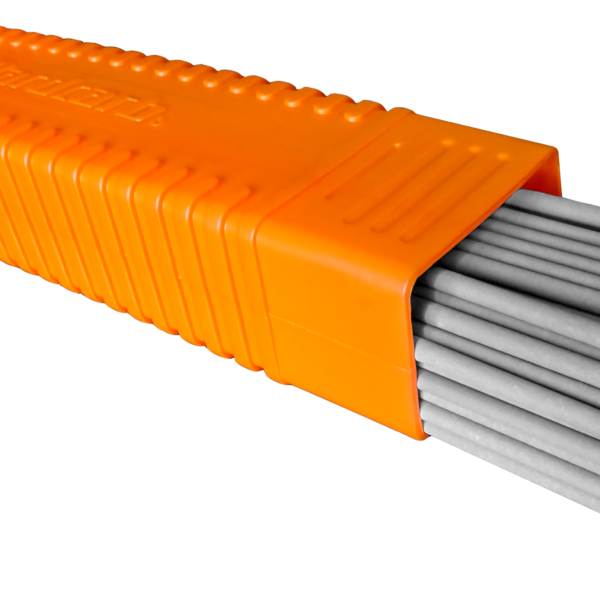Nicrolloy 211

A low amperage flux coated electrode for the repair, construction and production welding of nearly all commercial cast iron grades as well as for cast iron-to-steel joining. The electrode deposits a high grade nickel-iron weld metal: ideal for highly restrained or thick walled work pieces including applications where toughness and crack resistance is important. Both weld metal and transition zone are easily machinable using cutting tools. A copper cladded corewire enables exceptional resistance against overheating during welding.
Weld deposit characteristics:
The weld metal produces higher strength than the pure nickel cast iron types and are therefore preferable for dissimilar joints, nodular irons and higher strength cast irons. The weld deposit is less sensitive to hot cracking caused by pick-up of impurities such as phosphorus which are often present in castings. The low matrix contraction coefficient results in lower stresses during heavy repairs; thus reducing the possibility of cold cracking.
This electrode excels by very high crack-resistance and high tensile strength of the weld metal. Even in refined zones the seam is still machinable.
Recommended uses and applications
» suitable for joining most cast irons, including SG, meehanite, malleable, alloy as well as grey.
» for repair and fabrication of cast iron housings, blocks, machinery, parts, frames, casting defects, casting flaws, machine cuts, machining errors, repair of cracks, rebuilding worn or damaged areas.
» joining thick section castings and joints under restraint.
» for dissimilar joining cast irons to steel.
» thick-to-thin cast iron section joining.
» for leak proof welds requiring hydrostatic integrity.
Additional info
Anti-wear suitability
| Metal-to-Metal friction Metal surfaces in relative motion forced into contact with or without lubricant. Degradation by the formation of micro-welds between the contacting surfaces. | - |
| High pressure abrasion Wear by relative movement under pressure of mineral particles of suitable hardness, shape and texture to remove material from the metal surface, leaving superficial deformation. | - |
| Cavitation Tearing out of grains from the metal surface by the formation and implosion of bubbles in a liquid in rapid motion. | - |
| Mechanical fatigue Fatigue and formation of cracks in surface regions due to tribological stress cycles that result in the separation of material. | - |
| Thermal fatigue Cyclic exposure to high temperatures leading to permanent deformation by alternate expansion and contraction. Alteration of the structure and properties of the material. | - |
| Hot oxidation Creation of a poorly adhering oxide layer that reforms constantly. Degradation by loss of material thickness. | - |
Workability
| Work hardening Work hardening is the process of making a metal harder and stronger through plastic deformation. When a metal is plastically deformed, dislocations move and additional dislocations are generated. | |
| Edge retention Suitability for creating sharp edges and retaining them during operation. | |
| Machining Machinability is the ease with which a metal can be cut (machined) permitting the removal of the material with a satisfactory finish at low cost. | Highly suitable. |
Mechanical properties
| Yield strength | > 300 Mpa |
| Tensile strength | > 450 Mpa |
| Elongation A5 | > 10% |
| Impact strength | - |